Faith in the civil service
The diversity of faith in the civil service, and the steps being taken to support different faiths.
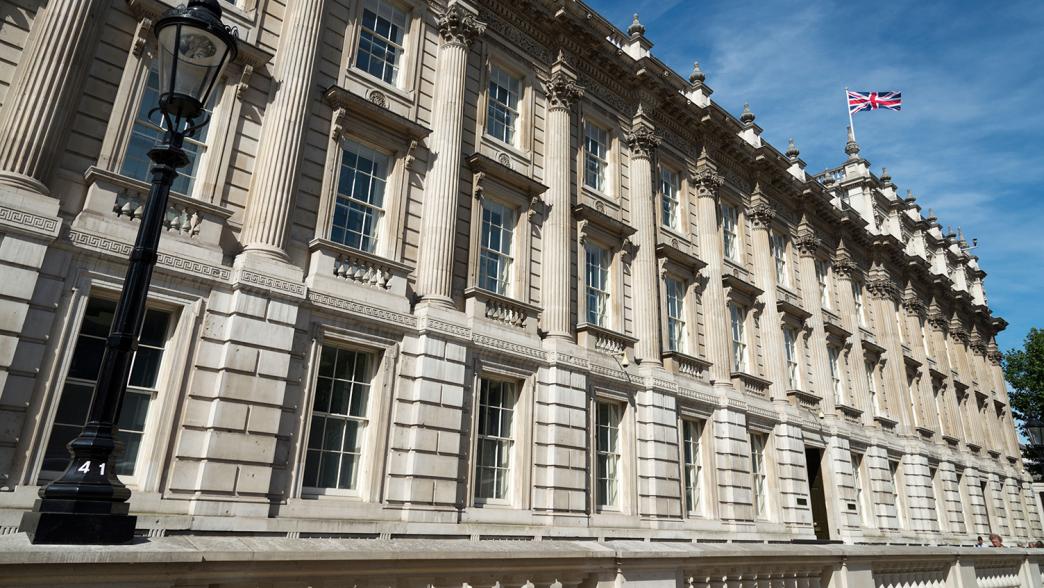
Why is it important that different faiths are represented in the civil service?
According to the Civil Service Diversity and Inclusion Strategy for 2022 to 2025, “a truly diverse workforce and culture of openness and inclusivity” acts as “a means of delivering better outcomes to the citizens we serve.”1
The civil service risks losing out on top talent when it fails to properly reach into different communities to attract, appoint and retain staff. And a civil service workforce that reflects the society it serves allows government to draw on the experiences of officials with a better understanding of how policy decisions impact on the public.
What is the diversity of faith in the civil service?
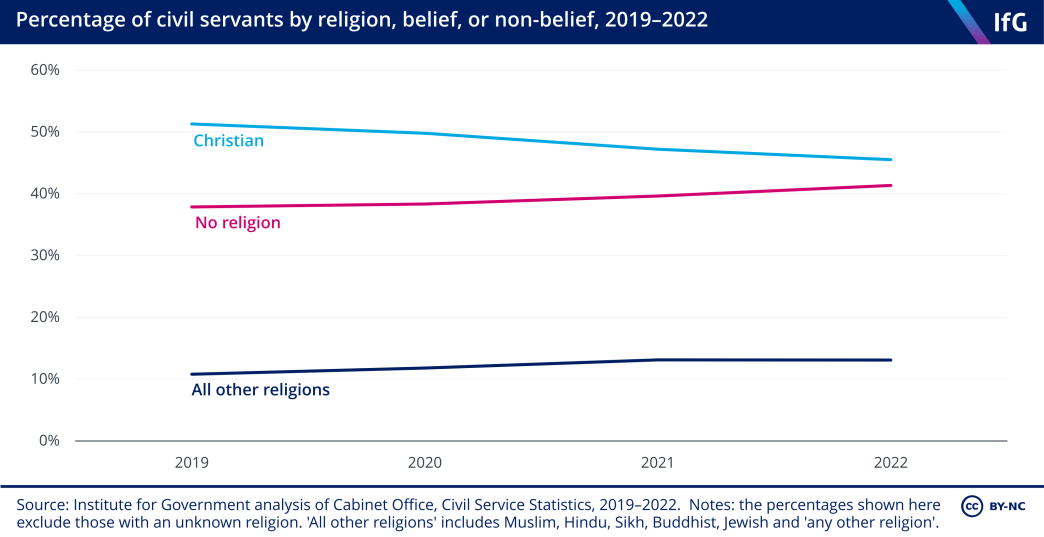
As of 2022, the largest religious group in the civil service is Christian, representing 46% of employees with a known religion or belief. This is a decrease from 51% in 2019. The second largest group is those who have declared no religion or belief, at 41%, up from 37.9% in 2019. All other religions comprise 13.1% of civil servants, an increase from 10.8 % in 2019.
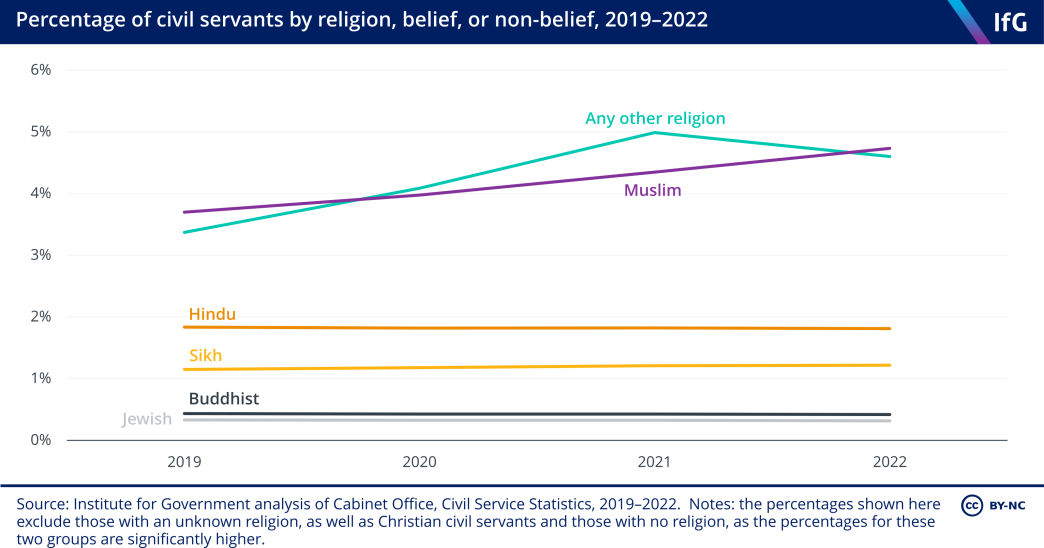
Among these other religions, the proportion of Muslim civil servants has increased from 3.7% in 2019 to 4.7% in 2022. Those declaring ‘any other religion’ has also risen from 3.4% in 2019 to 4.6% in 2022, though a slight decrease from 5.0% in 2021.
The proportion of civil servants declaring themselves as Hindu (1.8%), Sikh (1.2%), Buddhist (0.4%) and Jewish (0.3%) has remained unchanged since 2019.
How does this vary by civil service grade?
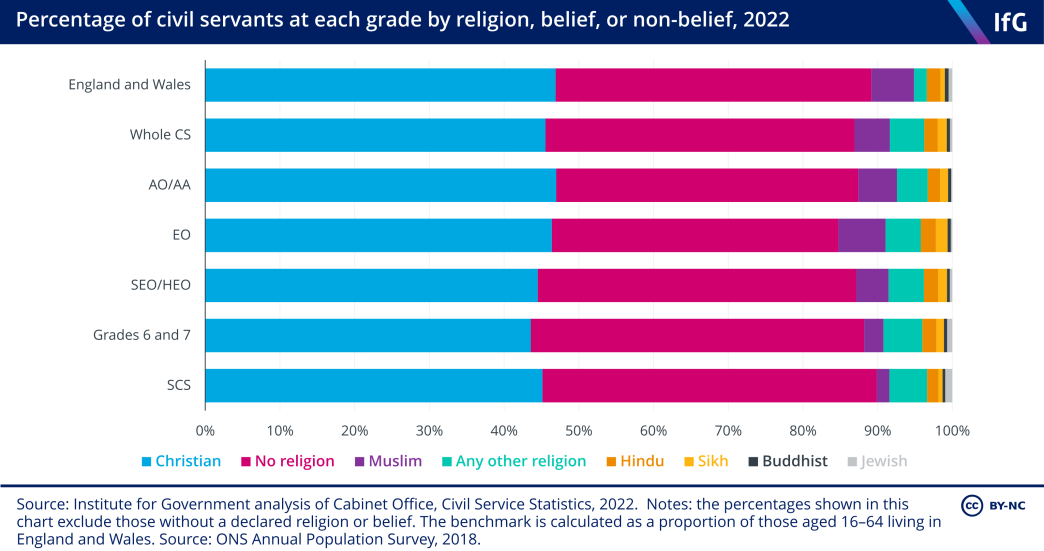
The Executive Officer (EO) level has the highest proportion of civil servants who are not Christian but have a declared religion or belief (excluding ‘no religion’) – 15%. By contrast, this proportion of employees is lowest in the senior civil service (SCS), where they make up 10% of civil servants.
The SCS is also the grade with the lowest proportion of Muslim employees (1.7%). Compared to the England and Wales population benchmark of 5.7%, Muslims are underrepresented at every level except EO, where they make up 6.3% of employees.
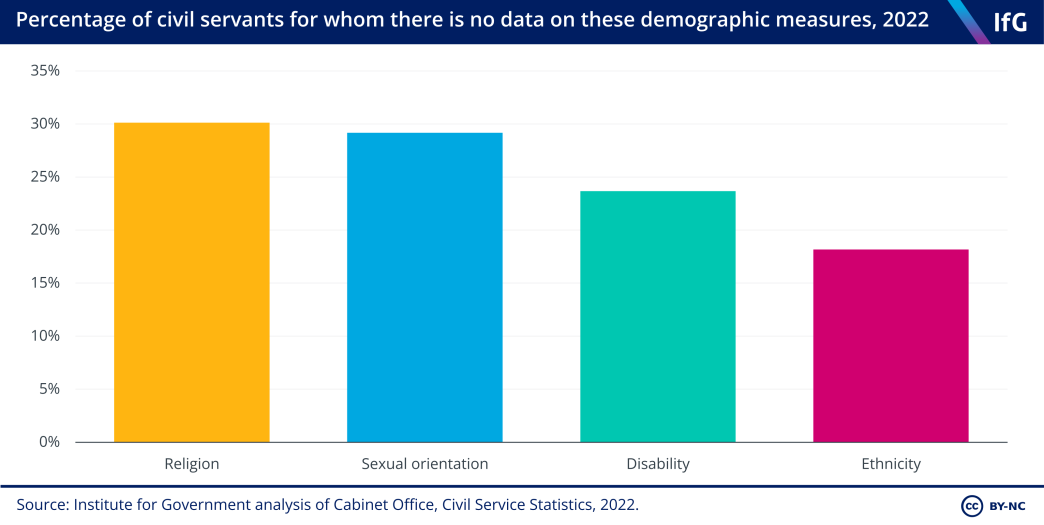
For 30% of the civil service there is no data on the religion of staff, though this is an improvement from 2021 when data was unavailable for 32% of employees. While individuals may have good reasons not to share their faith, belief or no belief, this data is important in determining the true representativeness of the civil service.
How does this vary by department?
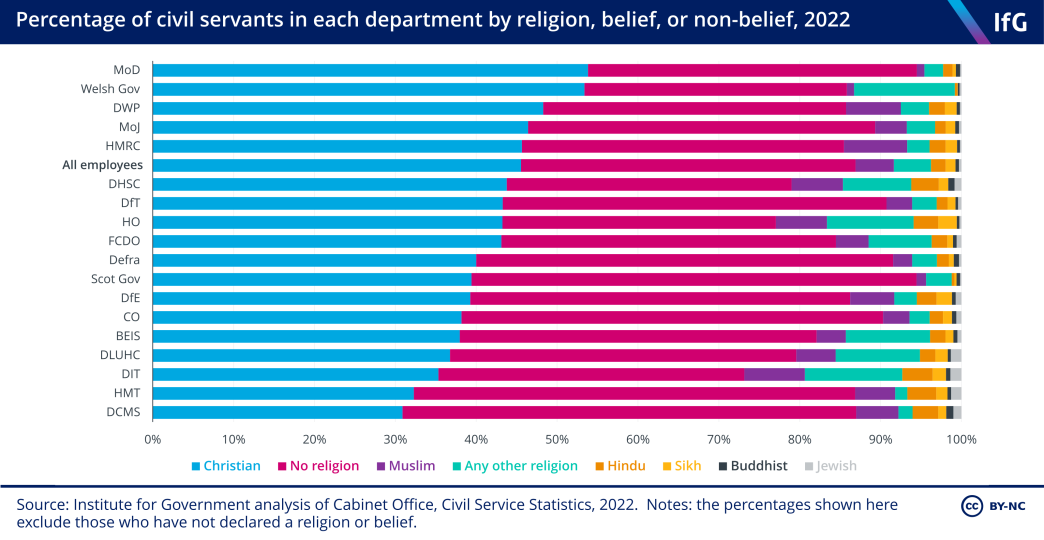
The department with the highest proportion of Christian employees is the Ministry of Defence (MoD), where 54% of staff are Christian, followed by the Welsh government (53%). The MoD also has the smallest proportion of civil servants who have positively declared a religion or belief that is not Christianity .
The Department for Digital, Culture, Media and Sport (DCMS) has the greatest proportion of employees declaring no religion or belief (56%), followed by the Scottish government (55%).
HMRC and the Department for International Trade (DIT) have the highest proportions of Muslim staff, with 7.8% and 7.5% respectively. DIT also has the largest proportion of employees who are not Christian but have positively declared a religion or belief (27%).
What steps are being taken to support different faiths in the civil service?
A number of initiatives have been launched to support different faiths in the civil service:
- A faith and belief toolkit, providing information on how to support specific religious practices and ensure inclusion.2
- The appointment of a permanent secretary as civil service faith and belief champion.3
- Civil Service, Civil Service Diversity and Inclusion Strategy: 2022 to 2025, 24 February 2022, https://www.gov.uk/government/publications/civil-service-diversity-and-inclusion-strategy-2022-to-2025
- Cabinet Office, Faith and belief toolkit, 31 July 2019, https://www.gov.uk/government/publications/faith-and-belief-toolkit/the-civil-service-faith-and-belief-toolkit
- Matthew Rycroft, Faith and Belief in the Civil Service – reflections from the new Champion, Civil Service blog, 4 May 2021, https://civilservice.blog.gov.uk/2021/05/04/faith-and-belief-in-the-civil-service-reflections-from-the-new-champion/
- Topic
- Civil service
- Keywords
- Civil servants Diversity and inclusion
- Department
- Cabinet Office
- Publisher
- Institute for Government